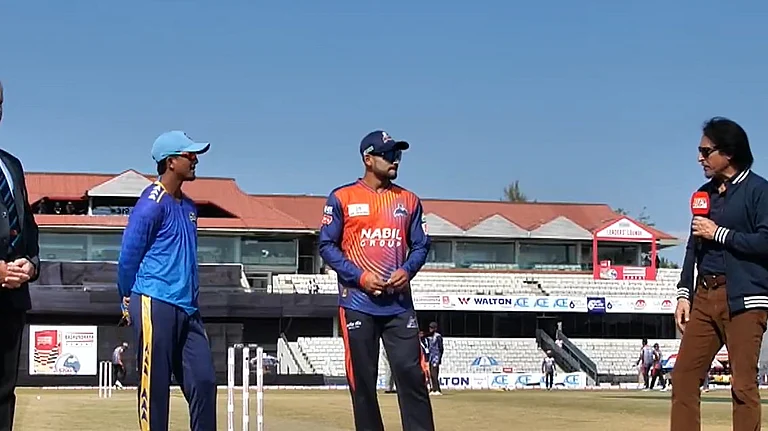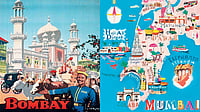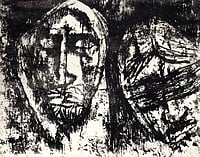What weaponisation of faith destroys first is faith. In what higher principle do we repose our faith during a week when we have experienced and witnessed the havoc that the cynical manipulation of religious feeling can wreak on a society? A week in which a police force mandated to protect all citizens has transmogrified into a communal militia that stigmatises a minority community and subjects it to brutal persecution?
In what collective formation do we repose our faith at a time when almost every institution that should have guaranteed the rule of law is either silent or averts its gaze or is complicit in the subversion of justice? In what dream of solidarity do we repose our faith at a historical moment when the language of identity has been privileged over the language of empathy and deployed to raise barricades between Us and Them, Inside and Outside, To-be-redeemed and To-be-annihilated? In what faith do we repose our faith when the weave of harmony, interdependence and oneness of being that all the world’s great religious traditions cherish have been ripped up and cast aside?
I sit here, immersed in a book by scholar Alok Bhalla and the poet Chandra Prakash Deval, a visual and literary feast that brings back to light a unique and sumptuous cycle of paintings of the Bhagavad Gita, made by the artist Allah Baksh in the late 17th century in Mewar. At the threshold of bloody, fratricidal warfare, Sri Krishna counsels his cousin Arjuna, a prince reluctant to launch into the maelstrom. In Allah Baksh’s radiant colours, Sri Krishna is surrounded by a fiery aureole, his teachings balancing between different imperatives of duty and opposed conceptions of the right way forward. In the painting that addresses the Bhagavad Gita 2:28, Allah Baksh counterpoints, to the chariot in which Sri Krishna instructs his warrior cousin, a scene in which a serene yogi speaks to a diverse group of animals, including a tiger, deer and ram. As Bhalla observes, this scene has been drafted into the pictorial space of this Mewar painting from the fables of Indian wisdom literature, which circulated irrespective of religion and in which “animals debate with human beings about the ethics of violence and non-violence, faith and betrayal. Animals protest their grievous violations. Allah Baksh, perhaps, knew the Hitopadesha, the Panchatantra and the Jatakas. Folk imagination, generally non-sectarian, is receptive to other voices and untroubled when the uncanny breaks through orthodoxy to suggest other ways of thinking about life”.
Where are those wise animals from our fables today when we so desperately need them to guide us away from the alienation and brutalisation generated in the name of faith? In the late 17th century, Maharana Jai Singh extended his patronage to a Muslim painter to develop an unprecedented verse-by-verse pictorial interpretation of the Bhagavad Gita. Today, a Muslim artist would suffer abuse, the threat of assault and perhaps even the fate of exile—as M.F. Husain did—if he were to embark on such a project.
What we see in action around us today is the ‘neo-tribalism’ that the Polish-British sociologist Zygmunt Bauman identified as one of the possible collective reactions to “liquid modernity”, the dissolution of traditional bonds and certitudes imposed on a society by the vast processes of economic and social transformation triggered by globalisation. Just as globalisation gathers individuals and communities together into ever-expanding webs of consumption and production, it also loosens the matrices, the neighbourhoods of existential value, in which these raw participants in a planetary drama have previously conducted their lives and invested their actions with meaning.

Globalisation also produces asymmetries between those who are able to participate in the circulatory culture of the global and those who cannot, whether owing to deficits of purchasing power, social location or linguistic competence. In such a scenario, a politics of toxic hate can deftly instrumentalise the resentment of those left out of the festivities, feeding this resentment into an incendiary mobilisation based on ethnic or religious identity. The rootless are given roots, the anomic a framework of values, the insecure a target, an ‘Other’ to annihilate. The Hindutva upsurge is a textbook example of this phenomenon. Founded in the desire to consolidate the domination of the Hindu upper-caste and upper-class elites, Hindutva has reduced Hinduism into an ideology of group assertion aimed at establishing a national counter-modernity governed by majoritarian rather than inclusive norms.
Hindutva is firmly anchored in a European conceptual and methodological framework. Its authoritarianism and state-worship stems from Mahatma Hegel, via an apprenticeship to fascism that has also given it impeccable militarist credentials. Its nativist obsession with the authentic territorial origins of nations and citizens is a gift from German Romanticism. Its puritanism and joyless suspicion of humour is channelled from Victorian Anglicanism. Its obsessive binary world view is sourced from Cartesian dualism. Given this pedigree, it is not surprising that Hindutva adopts a relentless ‘either/or’ format in defining group identities, belief systems and histories. This model has no place for the syncretism, synthesis and confluence that has, in actuality, distinguished Indian religious practice. By forcing Hindus into a victimological history that presents them as the targets of waves of Islamic and Christian invasion over a millennium, Hindutva erases the evidence that the Hindu tradition of thought, belief, worship and aesthetic practice has unfolded vibrantly during this same period of supposed eclipse, in some phases under the patronage of Lodhi, Mughal or Adilshahi rulers. A single example from this historical tapestry would be the extraordinary sacred landscape of Vrindavan, with its shrines and temples, which began to emerge only from the early 16th century onward, flourishing under the patronage or protection of the Mughal Empire.
Sadly, most Hindus also remain unaware of the humane revitalisation of Hindu thought crafted by philosophers like Daya Krishna, M.P. Rege and Ramchandra Gandhi, each as finely versed in the Indic canon as the Western one. In the process of preparing a critical edition of the Rig Veda, Daya Krishna discovered 30 rishikas, female rishis, among the authors of the hymns collected into the first Veda, challenging the normalised patriarchal optic through which Vedic antiquity is regarded. Rege’s emphasis on a samanya dharma that foregrounds ethical practice over the protocols of belief leads us far beyond the symbol-rattling of Hindutva. Ramchandra Gandhi’s celebration of the nurturing spirit of Sita’s kitchen, Sita ki rasoi, even in the ruins of an Ayodhya shattered by violence, offered a courageous riposte to Ram-oriented dogma. These thinkers remind us of those pivotal features of Hindu thought through the millennia: dvandva, the productive interplay of opposites as a fundamental condition of being; and tarka, debate, argument, a dialectical openness to discussing our way through and past differences, as a cardinal method for shaping thought and life.
If the bloodthirsty bigot is one beneficiary of a situation dominated by the loss of existential coherence, another is the rapacious neo-guru. A globalised economy can diminish the individual’s human possibilities within the routines of labour and survival. The sociality offered by traditional religions breaks down. When the community—as ecclesia, sangha, congregation, jamaat—fails the individual, a debilitating loss of self-worth seeps into the consciousness. Into such a spiritual vacuum rush the spiritual entrepreneurs, in whose hands faith degenerates into a remix religiosity, marketed as a leisure-and-lifestyle option, group therapy, or stress-management technique. The filter of New Age remix religiosity can trivialise any spiritual tradition, Upanishadic, Buddhist, Bhakti, or Sufi. Until it gets worse, and the casually expressed, deeply divisive biases against other religions or communities—and the rather unsaintly fascination with military solutions—reveal themselves from beneath the managerial jargon and charming eccentricities.
Confronted with these mutations of religious practices, where might we seek the replenishment of faith? Can we turn to living traditions that do not promise utopia, but insist on the responsible pursuit of the religious life in the present? These living traditions, which may be found among most of the world’s major religions—including Buddhism, Catholicism, Hinduism and Islam—might yet provide the basis for a constructive and wholesome engagement with the challenges of our present. At such a moment, we miss the presence of religious figures like the late Mahant Veerbhadra Mishra, scientist and hereditary custodian of the Sankat Mochan temple in Varanasi, deeply committed to restoring the compromised ecology of the great river to its former state. After the March 2006 bomb attack at the Sankat Mochan temple, he refused to allow right-wing parties to politicise the situation, and worked with Muslim colleagues to ensure peace at a volatile and precarious time.

Jai Singh of Mewar engaged Allah Baksh to develop a pictorial interpretation of the Bhagavad Gita in the late 17th century.
Figures like Mahantji inspire us to safeguard the environment, to refrain from insulting the earth and exploiting our fellow sentient beings. They help us to negotiate between the often loosely contrasted realms of faith and inquiry, between the alternatives of sociality and solitude. Through their reflection and action, we may find ways of reinstating the sacred in the interconnectedness of all life, in the most intimate and everyday rituals of life. Above all, they remind us that faith is an act of effort. We must learn how to practise it in a manner that is personally meaningful and also capable of assuming socially vital forms.
Faith can also become the ground of competitive expressivity, an ensemble of group assertions. For several decades, Hindutva sympathisers have pasted posters in public spaces showing a muscular Ram marching towards Ayodhya. The 2019 verdict on the Ramjanmabhumi has presumably rendered such gestures obsolete. By tragic contrast, as we move into the second decade of the 21st century, the aggressive enforcement of caste privileges and the humiliating marginalisation of Dalit communities have increased. In such a vitiated atmosphere, a vigorous statement of self-assertion is made by many cobblers, when they enshrine a polychrome image of their patron-saint, Sant Ravidas, in their stalls. In an atmosphere of resurgent savarna arrogance, too, it is heartening to see the prevalence, in Dalit neighbourhoods, of statues of Dr Babasaheb Ambedkar. Rendered in a now-customary iconography as pink-skinned and costumed in a blue suit, Dr Ambedkar stands splendidly defiant, in terms of complexion and sartorial choice, of the Brahminical order. Such competitive expressivity is a site of healthy dissensus, rather than enforced consensus. It embodies a public space in which subaltern and vulnerable group interests can announce themselves and articulate their claim to a place in the republic’s unfolding narrative.
Yet, even here, competition does not always form the leitmotif. When we immerse ourselves in the versatile and magically hybrid universe of South Asian calendar art and popular prints, we find an extraordinary process of cultural dialogue and exchange at play. Let us look, for instance, at the prints in which Kamadhenu, the wish-fulfilling cow of Hindu lore, appears accoutred with wings and a peacock-feather tail—these accoutrements are borrowed from the Buraq of Islamic folklore, the celestial horse that carried the Prophet on his miraculous night journey of illumination, al-Miraj. Or let us delight in the images of the Sufi saint, Lal Shahbaz Qalandar, guardian of the shrine of Sehwan in Sindh, who is often shown in a saffron robe or presented as a heavenly musician, dancing on a solar eagle modelled on Garuda, and surrounded by gandharvas bearing musical instruments.
At a time when religion has been codified into a top-down, authoritarian means of stifling dissent, it is salutary to remember that the religious imagination in South Asia has always been sustained by festive, playful, bottom-up impulses of improvisation. It was never embalmed in the singularity of a canon, but relayed in versions by agents who had a considerable measure of freedom in imagining iconographies, creating narratives, improvising new stories and performing new interpretations.
As we agonise over faith, let us remind ourselves that India’s greatest strength, for millennia, has been its dynamic ability to engage with a diversity of sources and impulses, to absorb and transmute them into a syncretic, kaleidoscopic culture. Every religion in the subcontinent has been nourished by the confluence of plural traditions, conversations across lines of belief and contributions from every social stratum. Religions seemingly opposed at the level of doctrine have come to share and incorporate one another’s imagery and practices with confidence. Let us reclaim this history, not in the spirit of melancholic nostalgia, but as a celebration of our robust lived experience. In the spirit of resistance to the crude and ultimately self-defeating polarisation that is being imposed on us at this fraught moment in our history as a nation. Let us demonstrate the throbbing pulse of millions of Indians, which animates that resonant line in the Preamble to the Constitution of India, which assures every one of us ‘LIBERTY of thought, expression, belief, faith and worship’. Let us keep faith with the hopes and dreams of the visionaries who founded this republic.
(The author is a poet and art curator)

























